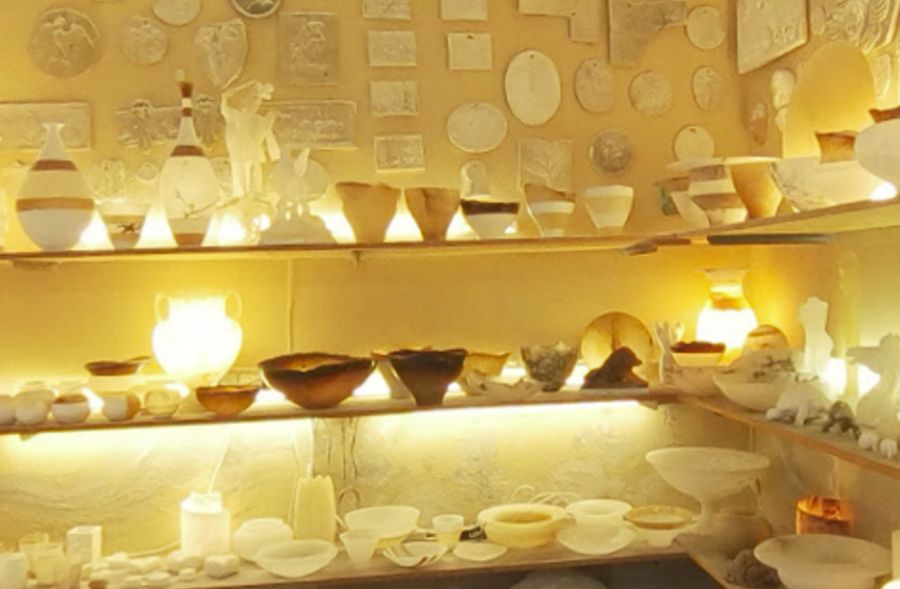Museums and monuments
In addition to the beautiful Cities of Art and the authentic open-air museums, you can also visit:
In addition to the beautiful Cities of Art and the authentic open-air museums, you can also visit:
I can assure you that there is no better way to appreciate the amazing landscape of San Gimignano than to climb its highest tower. From Piazza Duomo, enter the Town Hall (Palazzo Comunale), from where you can climb to the top of the tower Torre Grossa. All the towers of San Gimignano have always been private property and, consequently, closed to the public, with this being the exception, which continues to be owned by the local council (forming a part of the town hall).
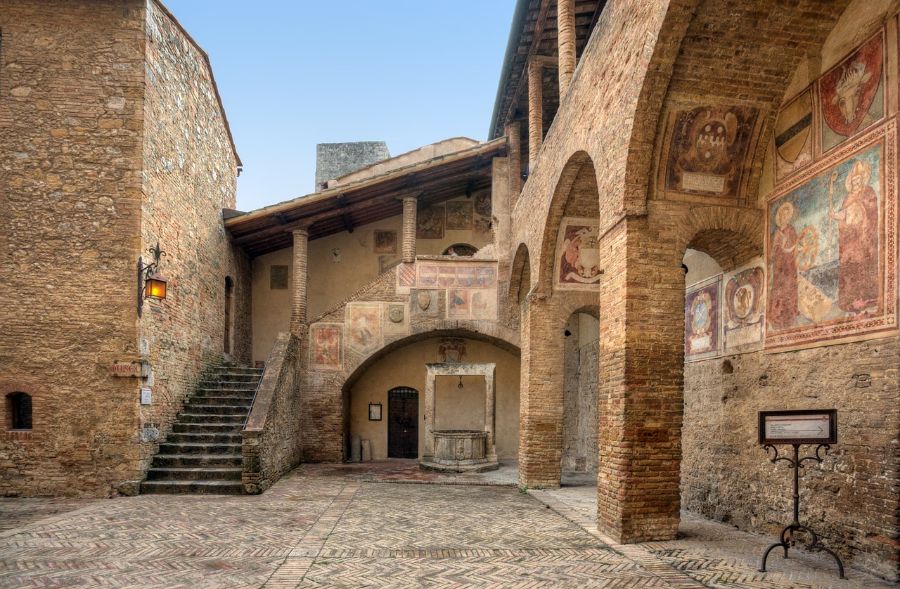

Scientist, architect, sculptor, painter, technologist, inventor, musician, astronomer, anatomist and more! Leonardo Da Vinci is the man who revolutionised the world with his cutting-edge ideas. In Vinci we can find the house where he was born and an interesting museum dedicated to him showing models of his most famous machines! Vinci is only about 40 minutes drive from Poderi Arcangelo! www.museoleonardiano.it – Tel. +39 0571 933251 – info@museoleonardiano.it
A particular and beautiful abbey dating back to the 13th century that owes much of its charm to the absence of the roof and its location in the green Tuscan countryside. Because of the absence of the roof, the abbey has exceptional acoustics and today offers a setting which is unique worldwide for concerts and other types of show. A few steps from the abbey, in the Montesiepi Chapel is the sword in the rock which has inspired legends which are intertwined with the saga of the knights of King Arthur!
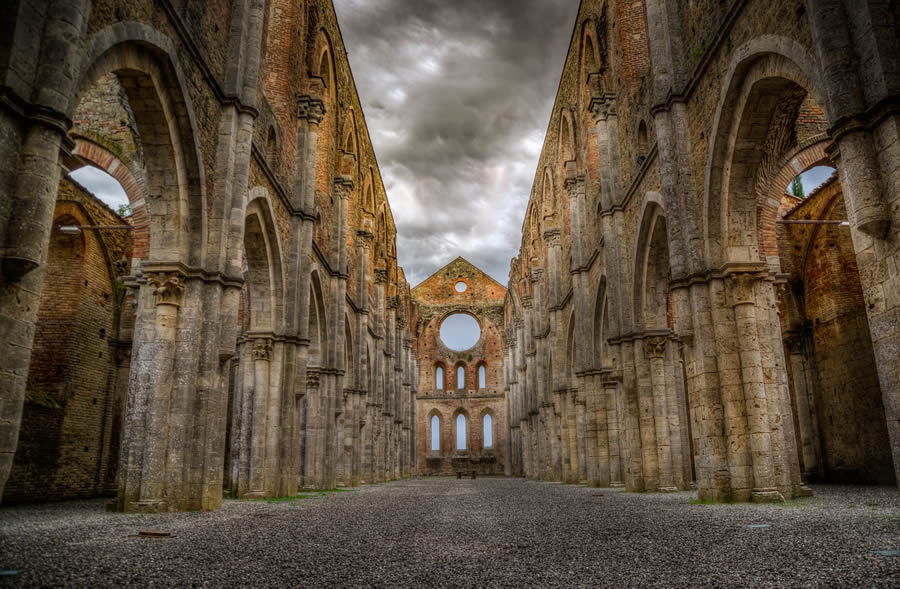
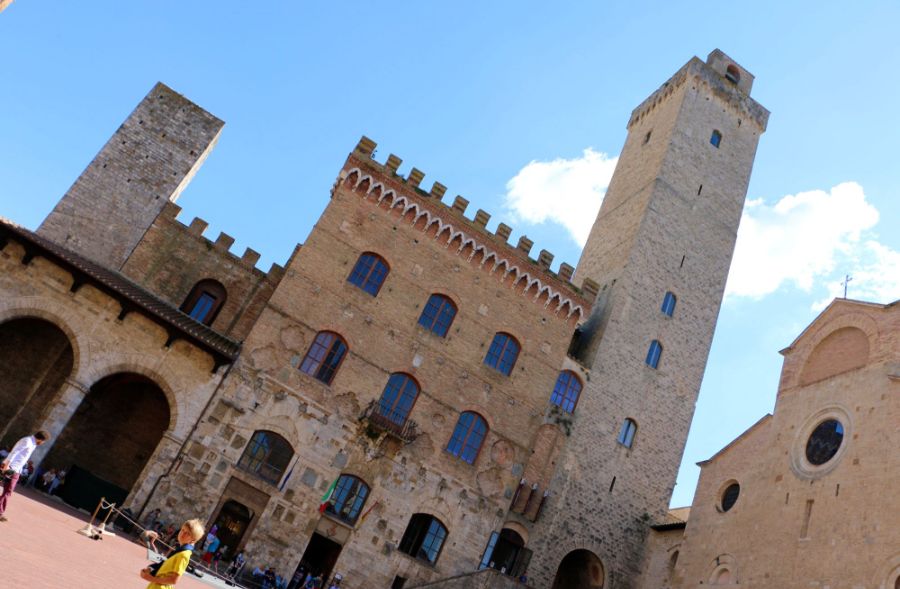
The Civic Museums of San Gimignano are divided into two main sites, the first of which is the Town Hall with its tower Torre Grossa. The Town Hall itself houses two important frescoed rooms – the first is the Dante Room (named after the famous poet, who was housed in this room when he visited San Gimignano as an ambassador of Florence to negotiate a peace treaty), where you can see the beautiful Madonna and Child by Lippo Memmi and other frescoes inspired by scenes of chivalry by Azzo di Masetto.
The other is the personal chamber of the Podestà, a sort of mayor in the thirteenth century, with beautiful scenes of love courtesy of Memmo di Filippuccio, inspired by both profane love, and wedding scenes: very, very interesting. Although some areas have suffered the inevitable consequences of the passage of time (the whole room has been frescoed), these scenes are a faithful representation of medieval times, the customs and traditions of the time, and the colours have remained impressively intact.
An extraordinary and unique way to visit these two frescoed rooms is to use ArtGlass that, although still in an experimental phase, are glasses that, using the innovative technology of virtual reality, allow you to see the frescoes in an interactive way, as if they had come to life. In essence, it is a pair of glasses with special sensors, a screen and earphones that will take you on a virtual journey to discover the Middle Ages. The sensors are able to recognise the frescoes you are looking at and you will be able to SEE and LISTEN to a virtual representation of the painter Lippo Memmi and a soldier who guides you on the discovery of every story represented on the walls. This is a truly unique and extraordinary way to visit the Town Hall, without considering that it is the first place in Italy to experiment with the use of virtual reality as an aid to art. By the way, since they are still in the experimental phase, the glasses are free, you will only be asked to leave your opinions on the experience, to help eliminate any defects or anomalies.
In front of this room is the access to the Art Gallery, the city’s own collection of panels painted by Sienese and Florentine artists from the thirteenth to the fifteenth century, who came to work in San Gimignano. Among the best known artists who have made some of these panels are Filippino Lippi, Benozzo Gozzoli, Benedetto da Maiano and Pinturicchio.
Torre Grossa, standing 54 metres high, is the highest tower in the city. Currently the tower is equipped with a modern steel staircase with 218 steps, but originally it was made of wooden planks and steps. The view from the top of the tower is really worth the exhausting climb…
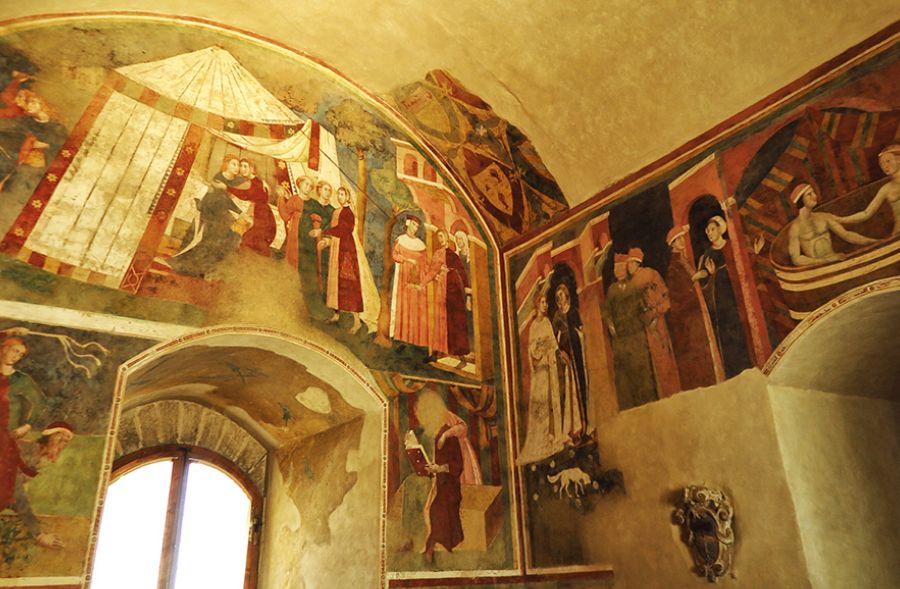
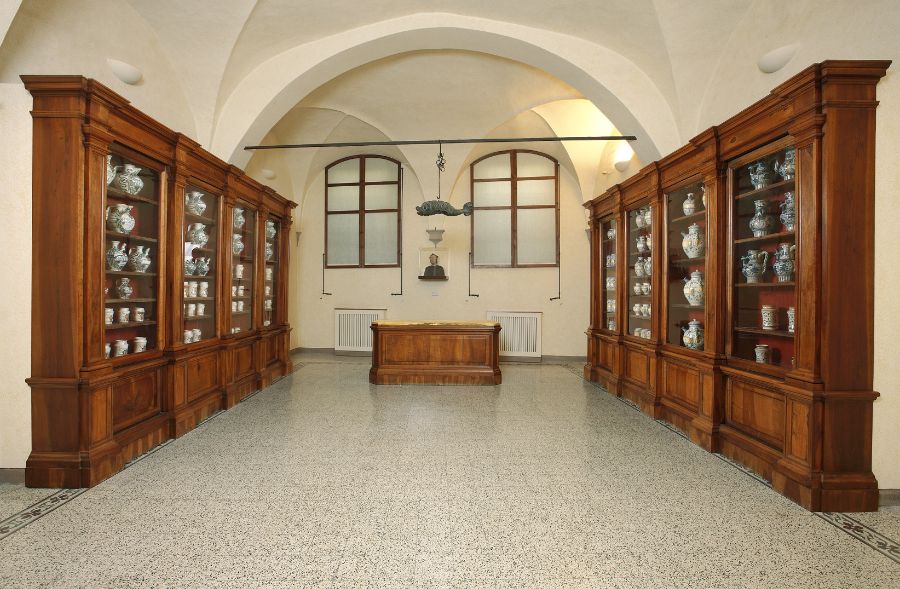
The second part of the civic museums is located by going from Piazza Duomo towards Porta San Matteo, with a detour on Via XX Settembre. Right in front of the main entrance, you can enjoy one of the most beautiful views of the various towers of San Gimignano, although inside the Gallery of Modern Art also offers a view which is perhaps even more impressive!
The museum complex, in fact, also has a large green area equipped with tables and chairs where you can eat a sandwich, or have a picnic.
The museum complex here offers a bit of everything, satisfying all tastes.
The Cathedral of San Gimignano is one of the most precious gems of the city and one of its most hidden secrets, since from the exterior of the church you would never imagine the treasures that are inside.
The San Gimignano 1300 museum is a scale representation made of clay of the entire town of San Gimignano. It shows how the city looked in 1300, with all its towers – some of which no longer exist – with their wooden balconies of the time.
You can also climb to the top of the city to see the remains of the ancient fortress, the Fortress of Montestaffoli, and visit the small museum dedicated to the famous white wine of San Gimignano, the Vernaccia. Another thing to see is the Museum of Torture, exhibiting the torture instruments of the times that were … not suitable for the faint of heart!
In the heart of the historic centre of Certaldo, along the central Via Boccaccio, is the Boccaccio House, home of the National Giovanni Boccaccio Association, the Museum and the library dedicated to him. The current building, opened to the public in 1957, is a faithful reconstruction of the original fourteenth century house which was almost completely destroyed by a bomb during World War II.
Inside the museum, in the Poet’s Room where, according to tradition, Boccaccio’s room was located, in addition to some rare examples of shoes from the fourteenth century, you can see the famous fresco depicting Boccaccio in his studio by the Tuscan painter Pietro Benvenuti on commission of the Marquise Carlotta Lenzoni de’ Medici who first had the house renovated and furnished. The medal collection with 20 coins made by master Bino Bini for the sixth centenary of the poet’s death, is dedicated to Boccaccio’s most important work, the Decameron, and to the protagonists of the ten days.
Not to be missed is the extraordinary specialist library which, in addition to collecting numerous valuable copies of the Decameron, illustrated by important artists and translated into almost all the languages in the world, also documents the importance of Boccaccio and Petrarch’s contribution to the development of the new geographical science in the second half of the fourteenth century.
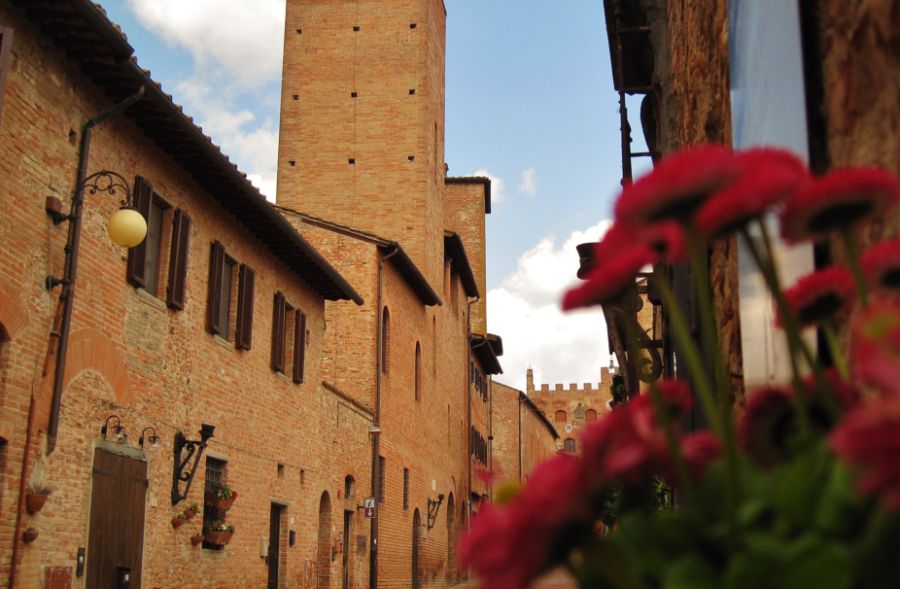
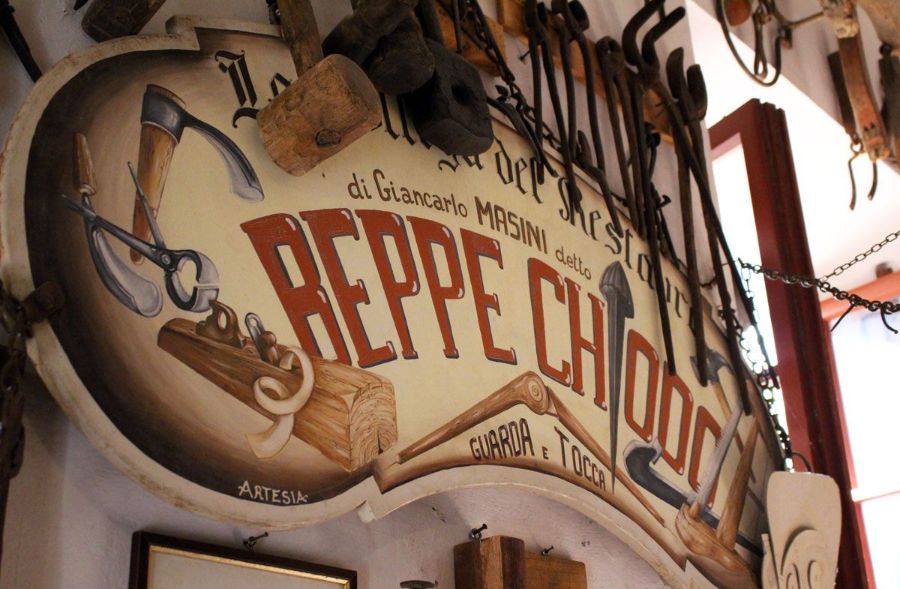
This original museum set up in the rooms of Palazzo Giannozzi, between Piazza dell’Annunziata and Porta del Sole, has a unique collection of nails from all ages and in all shapes, tools of rural civilization and wood carvings, collected by Giancarlo Masini, historic carpenter, artist and storyteller in whose workshop of Certaldo Alto was born the character “Beppe Chiodo”.
A museum inspired by the great artisan tradition of the Valdelsa, but also an unusual story of human history through everyday objects, anecdotes, stories and drawings relating to the many trades in which the nail plays a fundamental role.
Now the symbol of Certaldo, the Palazzo Pretorio is located at the end of Via Boccaccio and is an integral part of the urban museum system along with the Boccaccio House and the Museum of Sacred Art.
As testified still today by the brick façade studded with glazed terracotta coats of arms, in reference to exponents of the most important Florentine families, the Palace that was built in the twelfth century by the Counts Alberti, was, from the fifteenth century, the seat of the Vicariate of the Val d’Elsa and therefore a place where justice was administered.
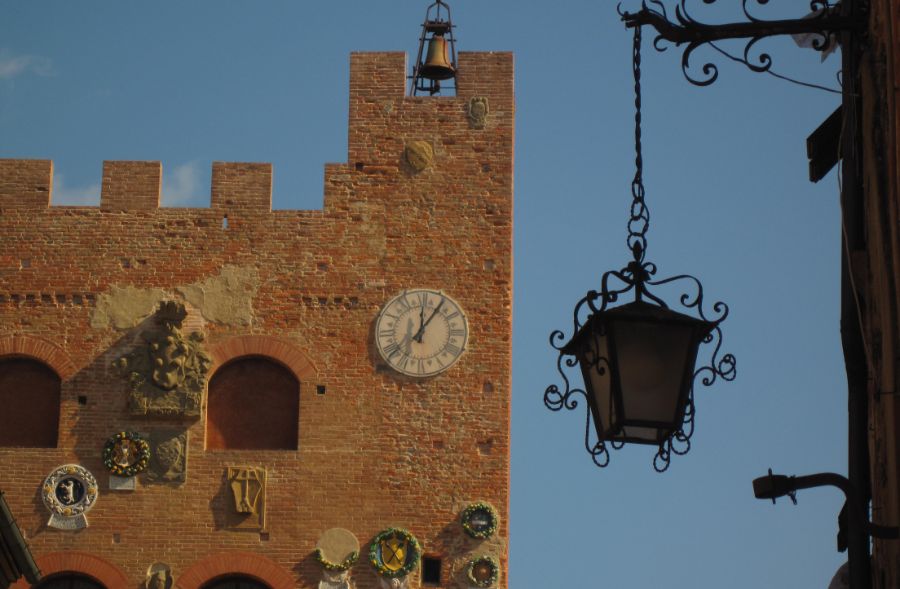
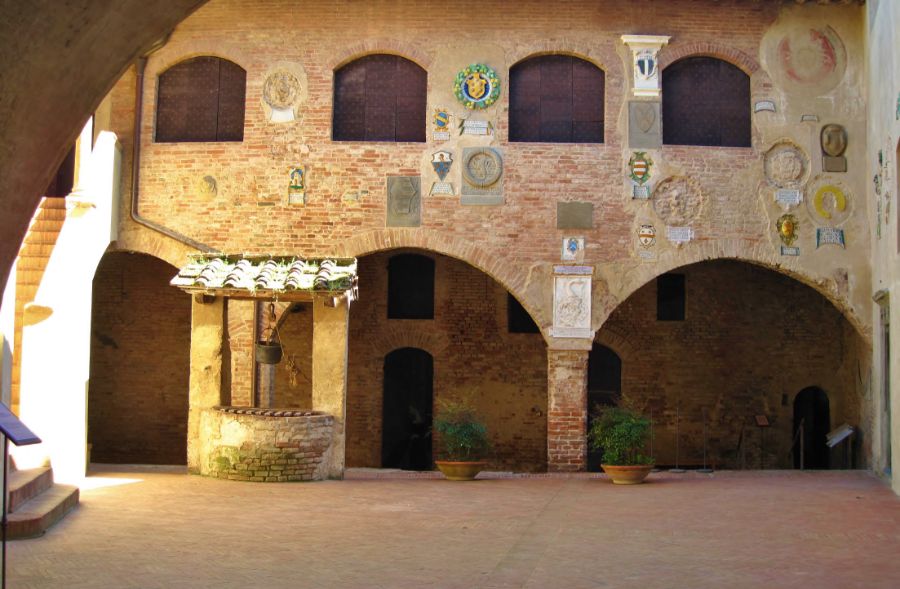
It is precisely to this function that the exhibition itinerary is dedicated. Starting from the Knight’s Chamber, where the first investigative hearings were held and where a significant motto stands out “ODI L’ALTRA PARTE E CREDI POCHISSIMO” (Listen to the other side and believe little of what you hear), continuing towards the Tabernacle of the Executed and visits the Audience Hall, the civil prison, the gloomy criminal prisons and the chapel where the condemned spent their last night in prayer.
On the upper floor the tour continues with a visit to the private apartments and the splendid Sala del Vicario frescoed at the end of the fifteenth century by Pier Francesco Fiorentino, while in the nearby church of San Tommaso e Prospero stands the Tabernacle of the Executed, a masterpiece by Benozzo Gozzoli who, originally located in a chapel along the road to the gallows, was the last comfort for those sentenced to death.
Not to be missed, finally, is the original Japanese garden created in the courtyard of the palace by the artist Hidetoshi Nagasawa, where there is also space for the reconstruction of a typical Japanese tea house.
Housed in a fifteenth century Augustinian convent, the museum is located between the Palazzo Pretorio and the Boccaccio House (with which it forms a single museum complex) and is accessed from the nearby cloister of the Santi Jacopo e Filippo Church.
Like many other sacred art museums, it collects works of art, vestments and gold treasures from local churches and the seven rooms that make up the exhibition contain real masterpieces, such as the extraordinary and now famous Wooden crucifix depicting the Christus Triumphans, the Christ who triumphs over death, attributed to an anonymous Tuscan sculptor of the thirteenth century.
The room that was once the refectory of the convent now houses the art gallery which boasts among others The Madonna on the Throne with Child and Two Saints by the Master of Bigallo and The Madonna on the Throne with Child and Two Angels by Meliore di Jacopo, both masterpieces of the thirteenth century, while particularly interesting due to the deep link with the local cult is the silver reliquary depicting the bust of Beata Giulia made in the middle of the seventeenth century by the Florentine goldsmith Paul Laurentini.
At the end of the visit, enjoy a moment of peace in the silent cloister or in the Hortus Conclusus, a typical garden with aromatic and medicinal plants, the presence of which was of fundamental importance for every medieval convent.
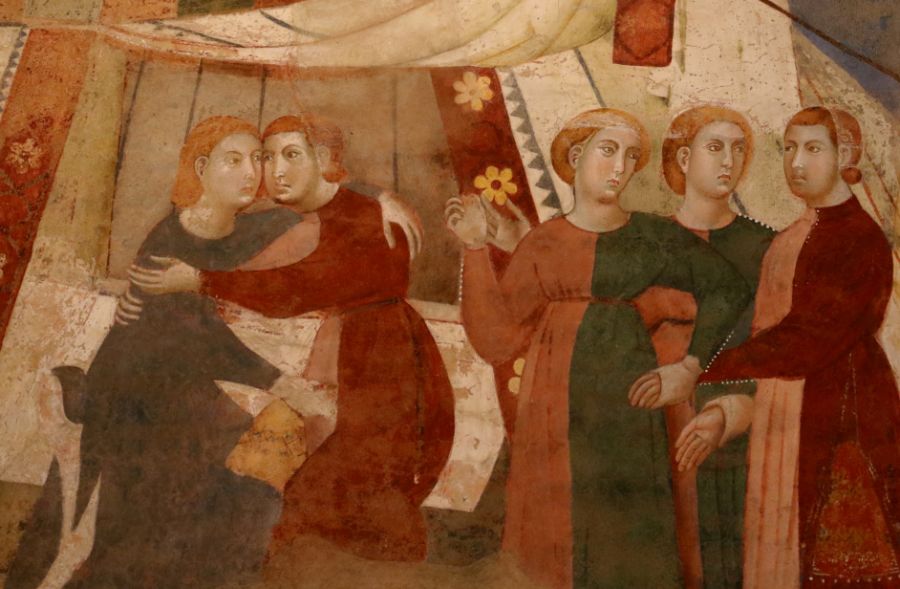
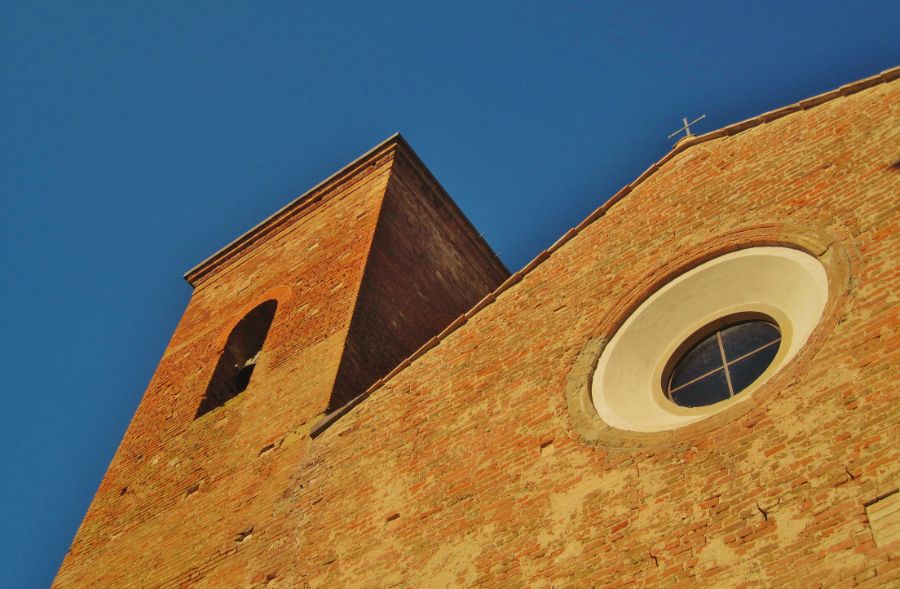
This small Romanesque church, built between the 12th and 13th centuries, is located between the Casa del Boccaccio and the imposing Palazzo Pretorio and is the access point to the Museum of Sacred Art in the Convent of the Augustinians.
In the centre of the single nave is the tomb of Giovanni Boccaccio, indicated with the bas-relief by the sculptor Mario Moschi inspired by the first known portrait of the Poet, painted in the mid-fifteenth century by Andrea del Castagno and now visible at the Uffizi Gallery in Florence.
Not far away lies another figure dear to the city of Certaldo, Beata Giulia della Rena, who lived and died in a chamber of the nearby convent and to whom, in this same church, in 1372 an altar was dedicated for which at the end of the fifteenth century sister Antonia, who according to legend was the daughter of the famous painter Paolo Uccello, made the predella with the stories now visible on the high altar.
The working of alabaster is an ancient art with very ancient origins. It was used by the Etruscans to make cinerary urns and then became raw material for the manufacture of various types of objects such as capitals, tabernacles, vases and other objects, both for artistic and common use.
And Volterra is the alabaster town. In fact, surrounding the beautiful town of Etruscan origin there are important deposits of alabaster, which is considered among the most valuable in Europe due its characteristics of compactness, transparency, grain and hardness.
The Alabaster Museum in Volterra is housed in the medieval Minucci Tower, adjacent to the Municipal Art Gallery. The route describes the history of alabaster working from the Etruscans to the present day by means of an original journey examining the technical and material aspects, stylistic characteristics, as well as economic and social implications.
The most significant objects are two alabaster cineraries from the Etruscan period, two capitals representing the only examples of alabaster working in the Middle Ages, a collection of valuable sculptures from the eighteenth and nineteenth centuries, a selection of alabaster medallions by Albino Funaioli and some works by the artist from Volterra Raffaello Consortini.
The Ecomuseum of Volterra is an interesting starting point for an urban itinerary in search of past and present evidence of this still current tradition, such as the Etruscan finds preserved in the Guarnacci Museum and the many craft shops active in the city.
